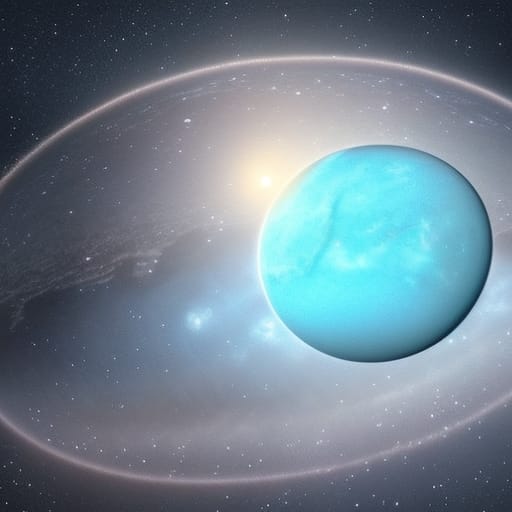Space: Neptune

Neptune is the eighth and farthest known planet from the Sun in our solar system. It is an ice giant, similar to Uranus, and is known for its striking blue color and dynamic weather systems. Here are the important aspects of Neptune:
Distance and size: Neptune is located about 4.5 billion kilometers (2.8 billion miles) from the Sun. It has a diameter of approximately 49,244 kilometers (30,598 miles), making it roughly four times wider than Earth.
Composition: Neptune is an ice giant, with an atmosphere composed primarily of hydrogen (about 80%) and helium (about 19%), along with a small amount of methane (about 1.5%). Methane absorbs red light, giving the planet its deep blue color. Beneath its atmosphere, Neptune has an icy mantle made up of water, ammonia, and methane ices, surrounding a rocky core.
Orbital and rotation period: Neptune takes approximately 164.8 Earth years to complete one orbit around the Sun. Its rotation period is about 16.1 hours, slightly faster than Uranus.
Temperature: Neptune's upper atmosphere has an average temperature of about -214°C (-353°F). Unlike Uranus, Neptune radiates more internal heat, which contributes to its active weather systems and makes it warmer than Uranus, despite its greater distance from the Sun.
Surface features: Neptune's atmosphere is characterized by dynamic weather systems, including the Great Dark Spot, a storm similar in size to Earth that has since dissipated, and other smaller storm systems. The planet's cloud features are driven by the strongest winds in our solar system, reaching speeds of up to 2,100 kilometers per hour (1,300 miles per hour).
Magnetic field: Neptune has a magnetic field that is tilted at a 47-degree angle relative to its rotational axis. Like Uranus, the magnetic field is generated by the motion of charged particles in its icy mantle.
Moons: Neptune has at least 14 known moons, the largest of which is Triton. Triton is unique among large moons in our solar system because it has a retrograde orbit, meaning it orbits Neptune in the opposite direction of the planet's rotation. This suggests that Triton may have been a captured dwarf planet from the Kuiper Belt.
Rings: Neptune has a faint system of five known rings, composed mainly of icy particles and dust. The rings are named Galle, Le Verrier, Lassell, Arago, and Adams, after the astronomers who contributed to the discovery of Neptune.
Exploration: Neptune has been visited by only one spacecraft, Voyager 2, which conducted a flyby in 1989. The data collected by Voyager 2 provided much of our current knowledge about the planet, its moons, and its rings.
Observing Neptune: Neptune is not visible from Earth with the naked eye and requires binoculars or a telescope to observe. When viewed through a telescope, its deep blue color and occasionally some of its larger moons, like Triton, become visible.
Mythology: Neptune is named after the Roman god of the sea, equivalent to the Greek god Poseidon. The planet's name follows the tradition of naming planets after deities from classical mythology and is fitting given its deep blue color, reminiscent of the ocean.